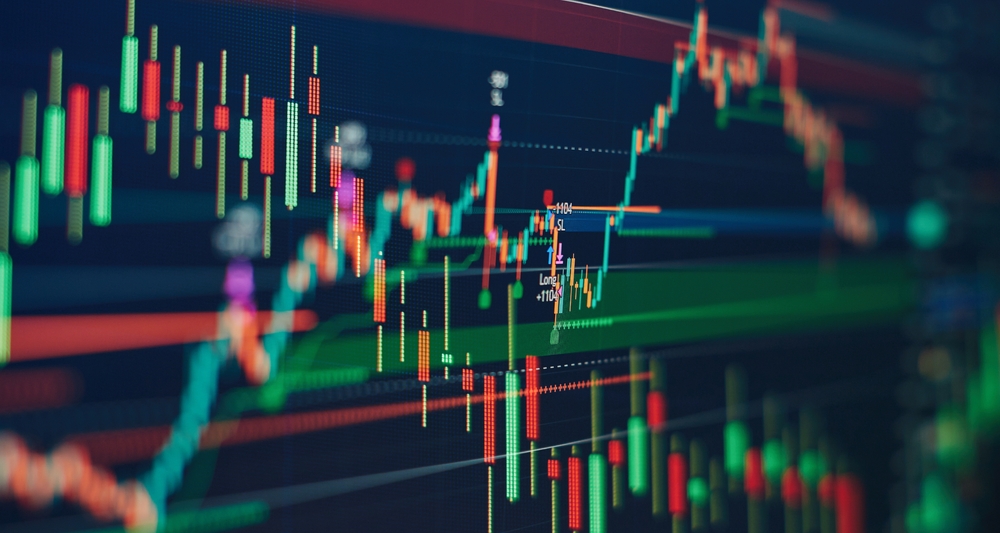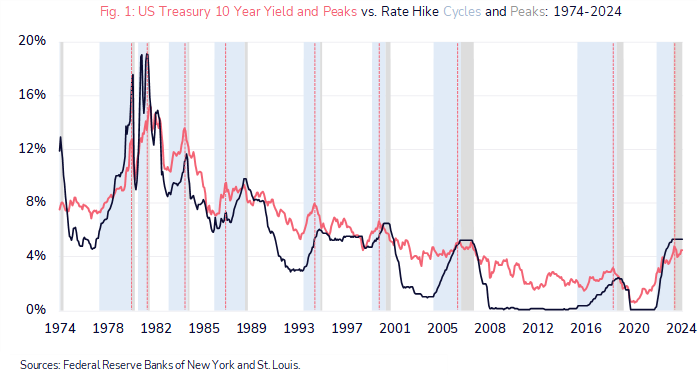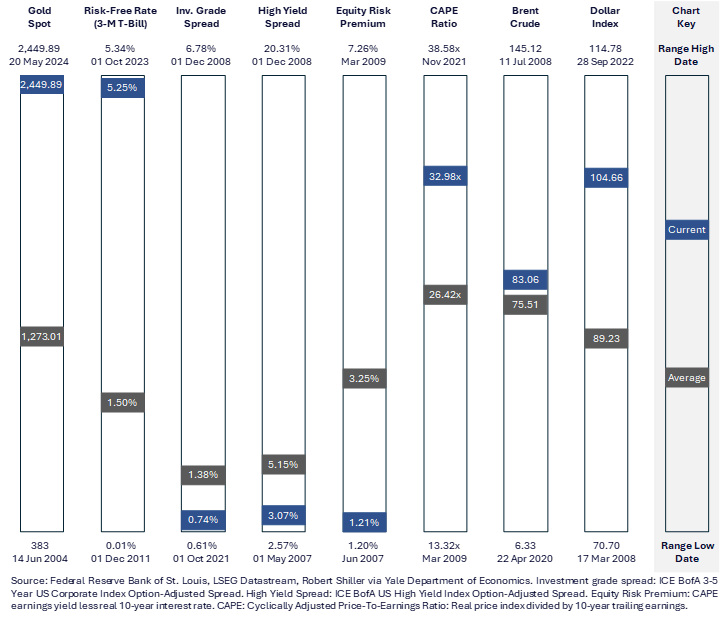By Tim Sharp
November was a risk-on month, following the unexpected Republican clean sweep in the Presidential elections that saw the markets react with a “Trump Trade”. Global equities rallied 4% in November with the US leading the way (+6.5%) and more specifically Small Caps (+11%) seen as a beneficiary of Trump policies to reduce corporate taxation, loosen fiscal constraints, and reduce regulation. Mega-tech was seen outperforming the wider US market, and Growth equities (+4.3%) were the next best performing factor. Global fixed income (+0.9%) was also in positive territory and led, in local terms, by Italian BTPs and German Bunds. This has been an indication of the level of fiscal stimulus being used by the US administration, creating loose conditions to facilitate future Fed easing. Although the December meeting saw the widely expected 25 basis point cut to the Fed Funds Rate, the euphoria in some parts of the US equity market was tempered by hawkish comments from Chair Powell. Financial markets had come to expect inflation to continue to fall despite the reflationary policies being considered by the new administration after the inauguration. The Fed therefore decided to remind markets of the pressures still showing within the US economy that could keep rates higher than forecasts predict for 2025. Furthermore, the breadth of equity market returns had narrowed once more, and the 10-yr US Treasury yield had passed the psychological 4.5% level that tends to affect equities. US equities have duly reset and now find themselves, at the time of writing, in negative territory for the month. Several concerns are creating year end headwinds, including Fed policy uncertainty, and an unexpected debt-ceiling debate despite the Republican majority.
There remains much political uncertainty in the developed world and – while we would normally deduce that politics rarely has long term effects on global financial markets – 2025 could be an exception. The change in policy outlook of a Trump administration has been taken as broadly equity positive, but the order of priorities could potentially change that outlook. For example, limiting or deporting immigrants, implementing tariffs aggressively, or cutting government spending are likely to have a poorer result on the growth outlook than cutting taxes or deregulation, with knock-on ramifications for the global economy. Furthermore, the expectations for an escalation in the US-China trade war are elevated and could affect both external demand and the relationship with alternative trading partners, at a time when existing fiscal and monetary stimulus has started to influence domestic demand. The chance of further fiscal stimulus may see China become more influential on global growth, as President Xi reportedly predicts China will hit its 5% growth target for 2024 in contrast to the expectations of many economic forecasters.
Further political uncertainties exist within the Eurozone, where a vote of no confidence in France’s Barnier government led to the dissolution of parliament, and the rejection of a tightening budget that the financial markets had looked upon favourably. This leaves President Macron to attempt another minority coalition with a more populist prime minister. Germany also faces snap elections in February after a no confidence vote in the current Scholz-led coalition in the face of rising right wing populist support and a potential change in the way the EU supports unity in fiscal policies. Germany remains one of the most conservative and influential countries within the EU in our opinion, so any loosening of the economic constraints by a more economically liberal government could impact the approach to governance and EU funding. European growth has surprised on the upside in 2024, and as monetary and fiscal drag reduce, is expected to continue in 2025. There is little doubt that Trump’s approach to the Russia-Ukraine conflict is likely to significantly impact the European outlook, potentially more so than the threat of tariffs. However, the potential for China to surprise on the upside will also influence the outlook for Europe.
In summary, we believe it is likely that the Trump trade and US exceptionalism will run into 2025 with technology, small caps, and cyclicals rallying on the potential for lower taxes and the loosening of regulation. We note that the differential between European and US valuations remains at its widest historically, which is being justified by the higher earnings growth forecast in the US. JPMorgan expect S&P500 earnings to grow by 14%, and European ex-UK by 8%, with multiples of 22x vs. 14x, respectively, while their UK forecast calls for 8% earnings growth in a market trading at just 11x[i]. This suggests to us that a significant discount for lower earnings estimates may already be priced into valuations. Some elements may be attributable to composition of sectors, especially the weighting to technology at 32% vs 9%, however, most sectors trade at a sizeable historical valuation discount to the US. There is a possibility for policy surprises in both the US and Europe, while earnings and margins will need to continue to expand to justify the US valuation premium.
In the meantime, we remain cognisant of relative valuations, the changing macroeconomic environment, and the geopolitical risks that we expect to significantly impact the global economy and financial markets. We wish everyone an enjoyable holiday period and look forward to 2025 with anticipation.
[i] Karen Ward _ JPMorgan Asset Management EMEA _ Investment Outlook 2025 _ November 2024
Acknowledgements
Zahra Ward-Murphy _ Absolute Strategy Research _ Investment Committee Briefing _ 2nd December 2024
















